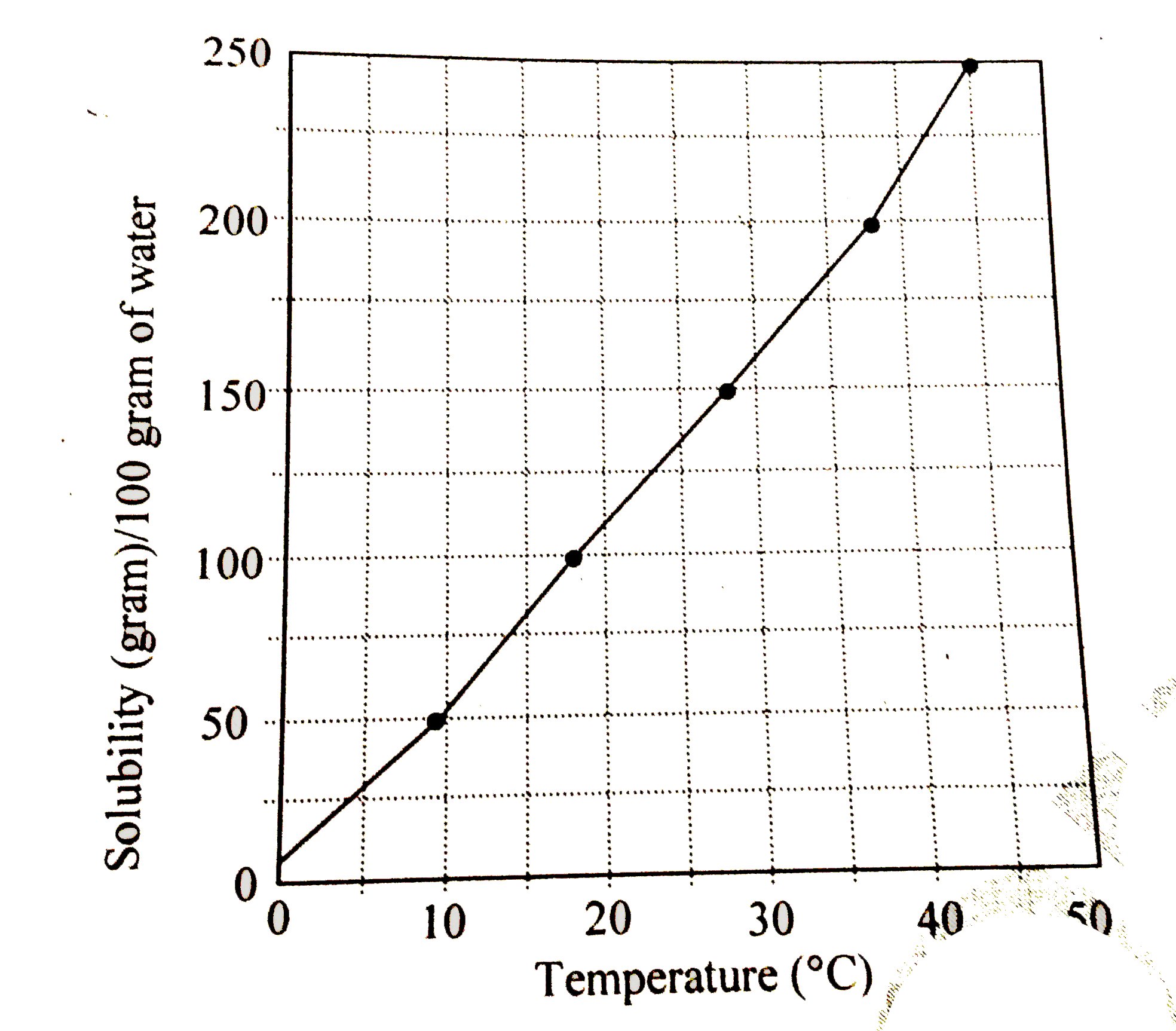Solubility of
increases with temperature
decreases with temperature
remains constant with temperature
is not related to the temperature fluctuations.
The correct Answer is:A
To determine the solubility of KNO3 (potassium nitrate) in relation to temperature, we can follow these steps:
1. Understanding Solubility:
- Solubility refers to the maximum amount of a solute (in this case, KNO3) that can dissolve in a solvent (usually water) at a given temperature.
2. Temperature Effect on Solubility:
- Generally, the solubility of most solids, including KNO3, increases with an increase in temperature. This means that as the temperature rises, more KNO3 can dissolve in the same amount of water.
3. Analyzing the Options:
- The question provides four options regarding the solubility of KNO3 with respect to temperature:
- A) Increases with temperature
- B) Decreases with temperature
- C) Remains constant with temperature
- D) Is not related to temperature fluctuations
4. Selecting the Correct Option:
- Since we established that the solubility of KNO3 increases with temperature, we can conclude that option A is correct.
5. Conclusion:
- Therefore, the solubility of KNO3 increases with temperature.
Final Answer:
- The solubility of KNO3 increases with temperature (Option A).
- Solubility refers to the maximum amount of a solute (in this case, KNO3) that can dissolve in a solvent (usually water) at a given temperature.
- Generally, the solubility of most solids, including KNO3, increases with an increase in temperature. This means that as the temperature rises, more KNO3 can dissolve in the same amount of water.
- The question provides four options regarding the solubility of KNO3 with respect to temperature:
- A) Increases with temperature
- B) Decreases with temperature
- C) Remains constant with temperature
- D) Is not related to temperature fluctuations
- Since we established that the solubility of KNO3 increases with temperature, we can conclude that option A is correct.
- Therefore, the solubility of KNO3 increases with temperature.
- The solubility of KNO3 increases with temperature (Option A).
Topper's Solved these Questions
- IS MATTER AROUND US PURE ?Book:MTG IIT JEE FOUNDATIONChapter:IS MATTER AROUND US PURE ?Exercise:EXERCISE (INTEGER / NUMERICAL VALUE TYPE )
Explore 5 Videos
- FOOTSTEPS TOWARDS(CBSE BOARD)Book:MTG IIT JEE FOUNDATIONChapter:FOOTSTEPS TOWARDS(CBSE BOARD)Exercise:SECTION-D
Explore 14 Videos
- MATTER IN OUR SURROUNDINGS Book:MTG IIT JEE FOUNDATIONChapter:MATTER IN OUR SURROUNDINGS Exercise:OLYMPIAD/HOTS CORNER
Explore 15 Videos
Similar Questions
Knowledge Check
If the solubility of Al(OH)3 is S moles/litre, the solubility product is
AS3B27S4CS2D4S3The solubility curve of KNO3 in water is shown below.

The amount of KNO3 that dissolves in 50 g of water at 40∘C is closest toA100 gB150 gC200 gD50 gThe molar conductivities of KCl, NaCl and KNO3 are 152,128 and 111 S cm2mol−1 respectively. What is the molar conductivity of NaNO3 ?
A101Scm2mol−1B87Scm2mol−1C−101Scm2mol−1D−391Scm2mol−1
The solubility of CaF2 in pure water is 2.3×10−6moldm−3 Its solubility products will be :
View SolutionThe solubility of CaF2 in pure water is 2.3×10−6moldm−3 Its solubility products will be :
View Solutionthe solubility of A2B3 is y mol dm−3. Its solubility product is
View Solutionthe solubility of A2B3 is y mol dm−3. Its solubility product is
View SolutionThe solubility ofPbCl2 at 25∘C is 6.3×10−3 mole/litre. Its solubility product at that temperature is
View Solution
